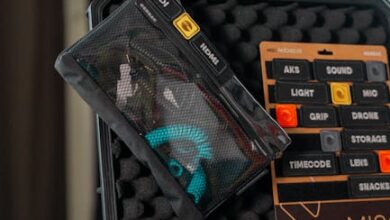QeRL’s Approach to Redefining the Reinforcement Learning Loop

The world of Large Language Models (LLMs) is constantly evolving, pushing the boundaries of what’s possible in artificial intelligence. Yet, this rapid advancement often comes with a significant cost: immense computational resources. Training and fine-tuning these colossal models, especially with methods like Reinforcement Learning (RL), typically requires fleets of powerful GPUs, putting advanced AI development out of reach for many. But what if there was a way to dramatically reduce these demands?
Imagine the possibilities if you could run Reinforcement Learning (RL) post-training on a 32B LLM in 4-bit NVFP4—on a single H100—with BF16-level accuracy and 1.2–1.5× step speedups? This vision is now a reality. NVIDIA researchers, in collaboration with experts from MIT, HKU, and Tsinghua, have introduced QeRL (Quantization-enhanced Reinforcement Learning). This innovative training framework propels Reinforcement Learning (RL) post-training into 4-bit FP4 (NVFP4) while meticulously preserving gradient math in higher precision through LoRA.
The research team’s findings are truly impressive, reporting more than 1.5× speedups in the crucial rollout phase and approximately 1.8× end-to-end performance compared to QLoRA in certain configurations. Most notably, QeRL marks the first successful demonstration of RL training for a 32B policy on a single H100-80GB GPU, democratizing access to high-end LLM fine-tuning. This groundbreaking work is detailed further in their paper.
QeRL’s Approach to Redefining the Reinforcement Learning Loop
Understanding QeRL’s impact begins with a look at the traditional Reinforcement Learning (RL) process. In most RLHF/GRPO/DAPO pipelines, the majority of wall-clock time is consumed by rollouts, which involve extensive token generation. This phase is computationally intensive and a major bottleneck for efficient training.
QeRL strategically addresses this by altering what it changes in the Reinforcement Learning (RL) loop. It shifts the policy’s weight path to NVFP4 (FP4) with dual-level scaling, while crucially maintaining logits and gradients in higher precision via LoRA. This ingenious design ensures that backpropagation remains stable and accurate.
Concurrently, the sampling path benefits from hardware-efficient FP4×BF16 kernels, leveraging NVIDIA’s specialized Marlin library. The direct outcome is significantly faster prefill and decoding during rollouts, eliminating the need to maintain a separate, full-precision policy. This streamlined approach delivers substantial efficiency gains.
Mechanically, the research team integrates Marlin-based FP4 kernels in both rollout and prefill stages, while LoRA effectively limits the number of trainable parameters. This precise targeting of the dominant cost and latency stage, especially for long reasoning traces in RL, is what makes QeRL so effective. By focusing on the most resource-intensive parts of the training, QeRL unlocks new levels of performance and accessibility for large LLMs.
At its core, NVFP4 is a hardware-optimized 4-bit floating-point format featuring two-level scaling—FP8 E4M3 block scalers combined with a FP32 tensor scale. This advanced design enables the highly efficient Marlin-based kernels that are fundamental to QeRL’s impressive speedups and reduced memory footprint.
Unlocking Exploration Through Quantization
One of the most fascinating aspects of QeRL is its innovative approach to exploration. Historically, quantization has been viewed primarily as a method for reducing model size and improving inference speed. QeRL, however, reveals a surprising benefit: deterministic FP4 quantization raises policy entropy.
This increased entropy effectively flattens token distributions early in training, leading to improved exploration. This stands in stark contrast to baselines like 16-bit LoRA and NF4-based QLoRA, which don’t inherently benefit from this exploration boost. QeRL has essentially made quantization a schedulable tool for discovery.
To provide control over this newly discovered exploration effect, QeRL introduces Adaptive Quantization Noise (AQN). AQN applies channel-wise Gaussian perturbations, mapped into LayerNorm scale parameters, which are then annealed with an exponential schedule. This clever mechanism ensures that kernel fusion remains intact, avoiding the overhead of extra weight tensors.
The ability to transition smoothly from an exploration phase to an exploitation phase is critical for effective Reinforcement Learning. QeRL’s AQN allows precise modulation of this exploration over time, optimizing the learning trajectory. The empirical evidence supports this: in ablations, QeRL consistently shows faster reward growth and higher final scores on math-reasoning tasks under both GRPO and DAPO.
These results align perfectly with the hypothesis that structured noise within the parameter space can serve as a highly beneficial exploration driver in RL. This is a significant paradigm shift, especially since such noise is typically considered detrimental in supervised fine-tuning. QeRL demonstrates that in the right context, judicious noise can be a powerful ally.
Performance and Practical Implications of QeRL
The reported results for QeRL paint a clear picture of its transformative potential in large language model training. Utilizing the Qwen2.5 backbone model, the research team demonstrated that NVFP4+LoRA significantly outperforms both vanilla LoRA and QLoRA in critical metrics like rollout throughput and overall training time.
Specifically, QeRL achieves more than 2× rollout throughput on 14B and 32B models when compared to QLoRA. Furthermore, in a representative setup, it delivers approximately 1.8× end-to-end speedups versus QLoRA. These figures are not just incremental improvements; they represent a fundamental shift in the efficiency of RL training for large models.
A crowning achievement of this research is the successful demonstration of training a 32B policy with GRPO on a single H100-80GB GPU. This was made possible by the substantially lower memory footprint inherent to weight-only FP4, effectively democratizing access to training models of this scale. Previously, such an endeavor would have demanded far more extensive and costly hardware.
Crucially, this enhanced efficiency does not come at the expense of accuracy. QeRL maintains competitive performance with higher-precision baselines. For a 7B model, the research team reports an impressive 90.8% on GSM8K and 77.4% on MATH500. These scores not only surpass 16-bit LoRA and QLoRA in their experimental setup but also match the performance of full-parameter fine-tuning.
Across a broader range of math benchmarks, such as BigMath, QeRL either maintains parity or demonstrates an outright advantage. This strong performance, combined with faster convergence due to improved exploration, solidifies QeRL’s position as a leading-edge framework.
It’s important to clarify what QeRL is and isn’t. QeRL specifically employs weight-only FP4 with LoRA updates; it does not claim FP4 precision for logits or gradients. The primary benefits are concentrated in rollout and prefill throughput, as well as memory footprint reduction. The empirical evidence clearly shows that quantization-induced entropy, when modulated by AQN throughout training, significantly aids RL exploration.
The generalization of these benefits to modalities beyond math-reasoning tasks or to applications like safety-critical or tool-use RL will depend on careful reward design and the specific sequence lengths involved. However, the foundational advancements made by QeRL lay the groundwork for exciting future developments in these areas. QeRL combines NVFP4 4-bit weight quantization with LoRA to accelerate the rollout phase and cut memory, enabling RL for a 32B LLM on a single H100-80GB. Quantization acts as exploration, as FP4 increases policy entropy, while Adaptive Quantization Noise (AQN) schedules channel-wise noise via LayerNorm scales. This leads to remarkable reported efficiency, with more than 1.5× rollout speedups versus 16-bit LoRA and approximately 1.8× end-to-end versus QLoRA, and over 2× rollout throughput against QLoRA on 14B/32B setups. Impressively, accuracy holds firm, with Qwen2.5-7B reaching 90.8% on GSM8K and 77.4% on MATH500, matching full-parameter fine-tuning under the paper’s setup.
Conclusion
QeRL represents a significant leap forward in the field of large language model training and Reinforcement Learning. By deftly combining 4-bit NVFP4 quantization with LoRA, it not only shatters previous hardware barriers, enabling the training of a 32B LLM on a single H100, but also introduces a novel mechanism for enhancing exploration.
The fusion of efficiency gains, robust accuracy, and an innovative approach to learning dynamics makes QeRL a powerful tool for researchers and developers. This framework signals a future where advanced AI capabilities, particularly in complex domains like RL, become more accessible and less resource-intensive. It’s a testament to the continuous innovation driving the AI landscape, pushing us closer to a future where more ambitious projects can be realized by more teams.
For those eager to dive deeper into this fascinating development, exploring the full codes and the research paper is highly recommended. The potential applications and further advancements stemming from QeRL are vast, promising to inspire the next generation of intelligent systems. We encourage you to engage with the open-source community, explore the tutorials, and contribute to this exciting frontier in AI.





